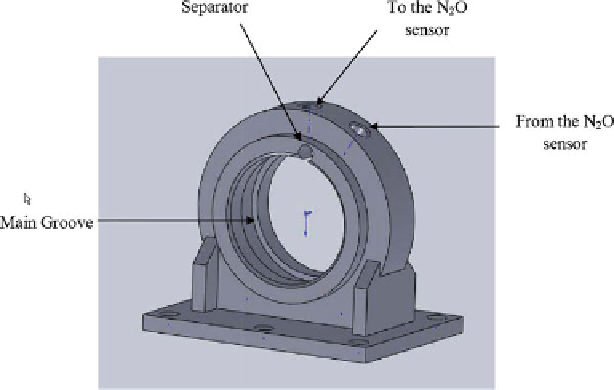Biomedical Engineering Reference
In-Depth Information
4
Open Surgery Experiments
A second set of experiments were carried out to simulate an open surgical procedure
using a sensing ring around the tube. This simulates a closed shell as it is envisaged
would be used and is shown in Fig.
3
. This model was first created in Solid Works
and then built with on rapid prototype machine. It contains one outlet for the N
2
O
sensor and one inlet for air. The hole made just below the sensor inlet was used to
separate the groove in the centre of the ring in two parts, and to create a “directional
flow” between this groove and the tube that goes into the testing ring. The separator
was introduced to make the air flow in a clockwise direction around the ring pushing
the gas in the direction of the sensor outlet and would help to avoid a vacuum in the
experiment.
Referring to Figs.
4
and
5
,theN
2
O gas is injected through the injection tube into
the rigid pipe and it would escape through one of the leak holes indicated by the
small red circles, shown in Fig.
4
and marked with an angle in order to identify the
location of the leak. The gas then circulates in the groove between the testing ring
and the colon, and exits through the pipe to the N
2
O sensor inlet shown in Fig.
5
.
It then, passes through the pump, reaches the sensor, which reads the amount in
ppm increase over the time of the gas and transmits the information to the computer
through the Pico system. The gas is then pumped into the testing ring again through
the outlet of the N
2
Osensor.
However, some issues were found during the testing phase. One of them was
that there was a leakage between the groove and the pipe probably caused by
the separator, which was a piece of rubber from an O-Ring, or by an imperfect
attachment of the colon analogue into the testing ring leaving it slightly loose
Fig. 3
CAD model of testing ring for one sensor

